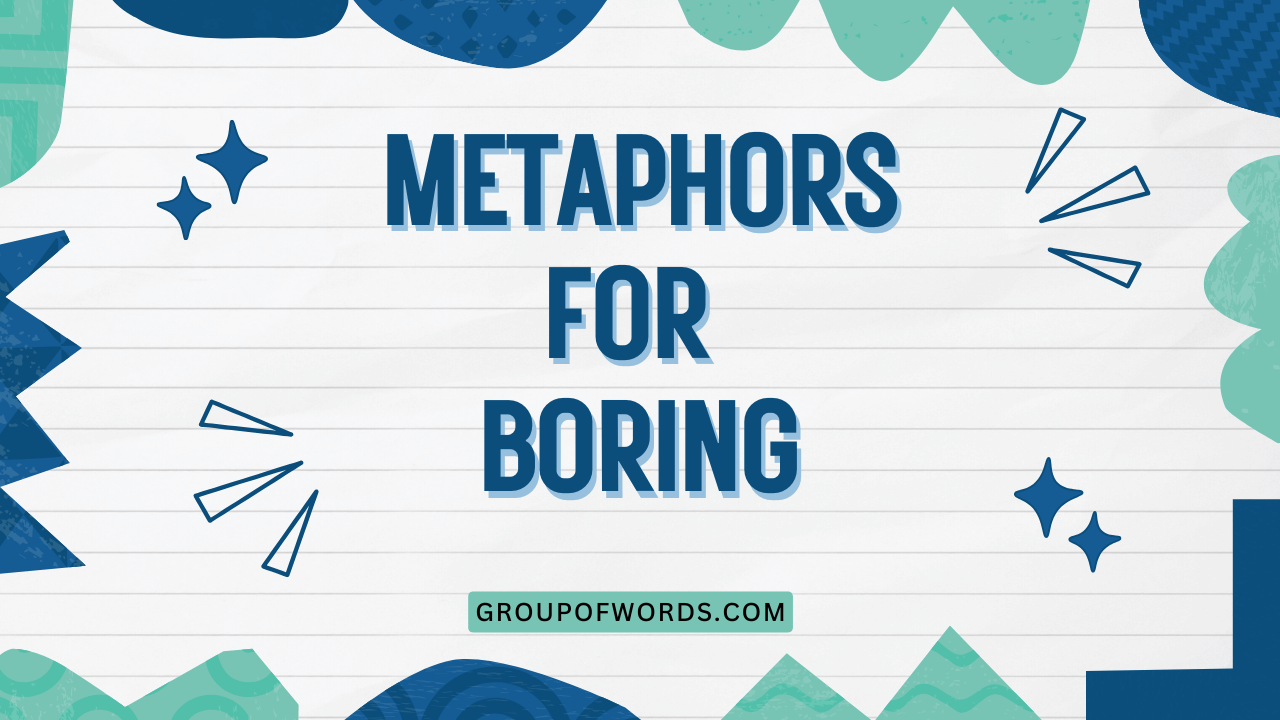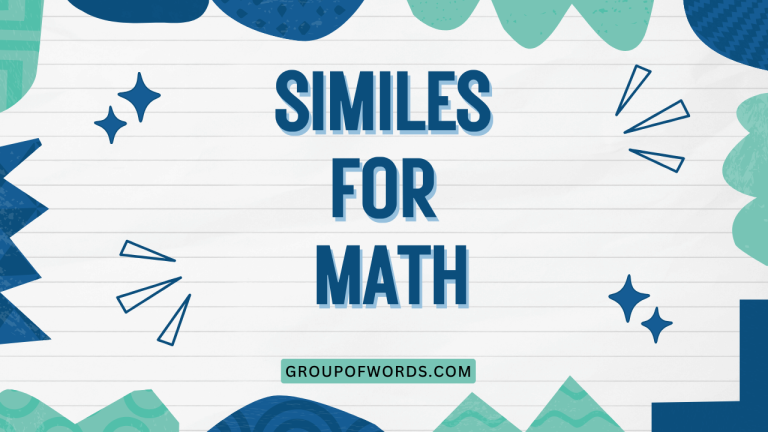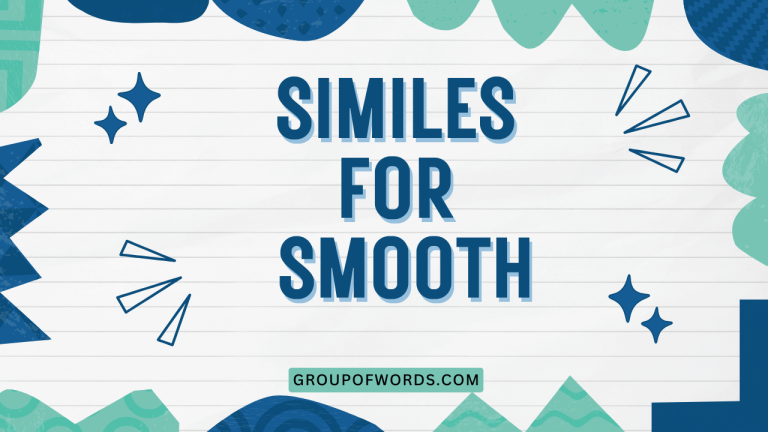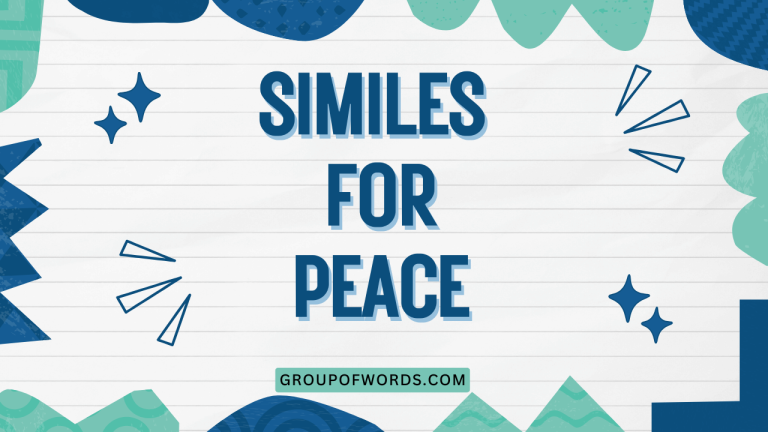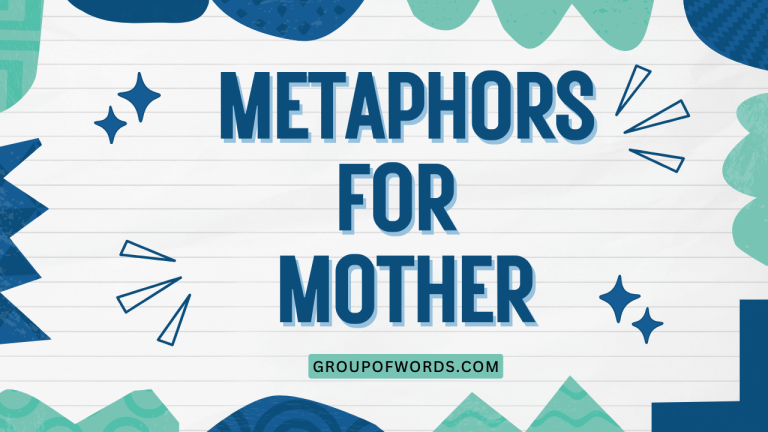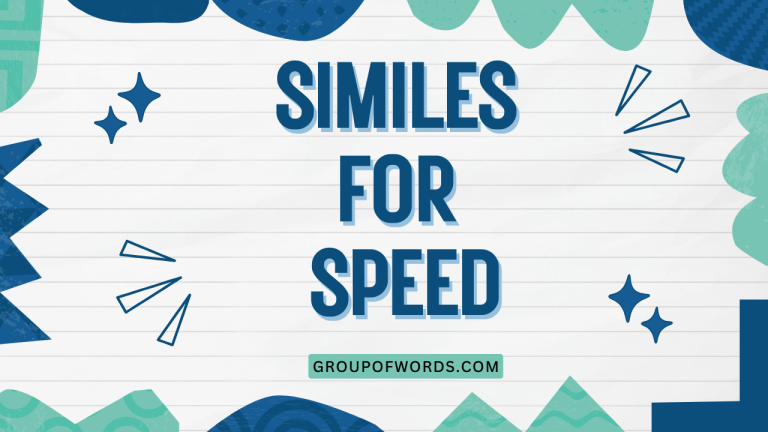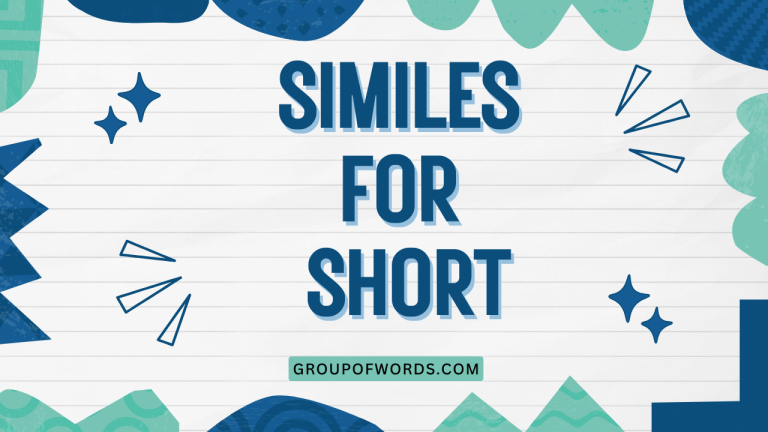Beyond “Boring”: Mastering Metaphors to Describe Tedium
Describing something as “boring” can feel, well, a bit boring itself. English offers a rich tapestry of metaphors to express the nuances of tedium, from the mildly uninteresting to the utterly mind-numbing.
Understanding these metaphors not only enhances your vocabulary but also allows you to convey your feelings with greater precision and flair. This article delves into the world of metaphors for “boring,” exploring their meanings, structures, and usage, equipping you with the tools to articulate your experiences of boredom in creative and engaging ways.
This guide is perfect for English language learners, writers, and anyone looking to add color and depth to their descriptive language.
Whether you’re a student aiming to improve your writing skills, a professional seeking to communicate more effectively, or simply a language enthusiast eager to expand your linguistic repertoire, this comprehensive guide will provide you with the knowledge and practice you need to master the art of using metaphors to describe boredom.
Table of Contents
- Introduction
- Defining Metaphors for Boring
- Structural Breakdown of Boring Metaphors
- Types and Categories of Metaphors for Boring
- Examples of Metaphors for Boring
- Usage Rules for Boring Metaphors
- Common Mistakes with Boring Metaphors
- Practice Exercises
- Advanced Topics
- FAQ
- Conclusion
Defining Metaphors for Boring
A metaphor is a figure of speech that directly compares two unrelated things, asserting that they are the same in some way. It’s a powerful tool that allows us to understand one thing in terms of another, often creating vivid imagery and emotional resonance.
When we use metaphors to describe something as “boring,” we’re not simply stating a lack of interest; we’re evoking a sense of stagnation, emptiness, or frustration through figurative language. Metaphors for boring often function by associating the boring subject with something else that is commonly understood to be tedious, uninteresting, or lacking in vitality.
Metaphors differ from similes in that similes use words like “like” or “as” to make the comparison explicit (e.g., “as boring as watching paint dry”), while metaphors state the comparison directly (e.g., “watching paint dry is my life right now”). Understanding this distinction is crucial for effectively employing metaphors in your writing and speech.
The function of these metaphors is to elevate the expression of boredom beyond a simple statement, adding depth, color, and a more engaging quality to your communication. The contexts in which these metaphors are used are varied, ranging from casual conversation to formal writing, each context demanding a different level of sophistication and appropriateness in the choice of metaphor.
Structural Breakdown of Boring Metaphors
The structure of a metaphor for “boring” typically involves two key elements: the tenor and the vehicle. The tenor is the subject being described (i.e., the boring thing), and the vehicle is the thing to which it is being compared (i.e., something else that is considered boring). The effectiveness of the metaphor lies in the relationship between these two elements.
For example, in the metaphor “This lecture is a desert,” the tenor is “the lecture,” and the vehicle is “a desert.” The implied comparison is that the lecture, like a desert, is barren, lifeless, and devoid of anything stimulating. The success of this metaphor depends on the audience’s understanding of the negative connotations associated with deserts (e.g., emptiness, aridity, lack of sustenance).
Understanding the structural components allows you to create your own metaphors, selecting vehicles that resonate with your audience and accurately convey the specific nuance of boredom you wish to express. Consider the following breakdown:
- Identifying the Tenor: Pinpoint the specific subject or situation you want to describe as boring.
- Selecting the Vehicle: Choose an object, concept, or situation that is commonly associated with boredom or a lack of excitement.
- Establishing the Connection: Ensure that the connection between the tenor and vehicle is clear and relevant to the intended audience.
- Considering Connotations: Be mindful of the connotations associated with the vehicle, as these will shape the audience’s perception of the metaphor.
By carefully considering these structural elements, you can craft metaphors that are both effective and evocative, transforming a simple statement of boredom into a powerful expression of feeling.
Types and Categories of Metaphors for Boring
Metaphors for “boring” can be categorized based on the specific aspect of boredom they emphasize. Here are some common categories:
Metaphors of Slowness
These metaphors emphasize the slow, dragging pace of the boring experience. They often involve comparisons to things that are notoriously slow or stagnant.
This category can effectively convey a sense of impatience and frustration.
Metaphors of Emptiness
These metaphors highlight the lack of substance or meaning in the boring experience. They often involve comparisons to empty spaces, voids, or things that are devoid of content.
These metaphors are useful for conveying a sense of intellectual or emotional dissatisfaction.
Metaphors of Monotony
These metaphors emphasize the repetitive and unchanging nature of the boring experience. They often involve comparisons to things that are constantly the same or lack variety.
This category is effective for conveying a sense of weariness and apathy.
Metaphors of Dullness
These metaphors focus on the lack of stimulation or excitement in the boring experience. They often involve comparisons to things that are muted, bland, or lacking in vibrancy.
These metaphors are helpful for conveying a sense of apathy and disinterest.
Metaphors of Heaviness
These metaphors highlight the oppressive and burdensome nature of the boring experience. They often involve comparisons to heavy objects, weights, or things that weigh one down.
This category is useful for conveying a sense of being burdened or overwhelmed by boredom.
Examples of Metaphors for Boring
Below are numerous examples of metaphors for “boring,” categorized by the type of boredom they represent. Each example is designed to illustrate how different vehicles can be used to effectively convey the feeling of boredom.
Examples of Slowness Metaphors
The following table provides examples of metaphors that use slowness to describe boredom. These metaphors often evoke a sense of dragging time and tedious progression.
| Metaphor | Explanation |
|---|---|
| This meeting is like watching paint dry. | Compares the meeting to a notoriously slow and uneventful process. |
| The lecture moved at a snail’s pace. | Implies the lecture was extremely slow and tedious. |
| Time crawled during the presentation. | Suggests that time felt exceptionally slow and drawn out. |
| It was as exciting as watching grass grow. | Highlights the lack of excitement by comparing it to a mundane and slow natural process. |
| The minutes dripped by like molasses. | Evokes the image of something slow and viscous, representing the passage of time. |
| The presentation was a slow-motion train wreck. | Combines slowness with a sense of impending disaster, highlighting the painful tedium. |
| He spoke with the speed of a glacier. | Emphasizes the speaker’s slow pace, making the speech boring. |
| The day dragged on like a wet week. | Implies the day was long and unpleasant, making it feel exceptionally slow. |
| It felt like watching a clock tick for hours. | Focuses on the repetitive and slow nature of watching a clock, representing boredom. |
| The movie was a cinematic sleeping pill. | Suggests the movie was so slow and unengaging that it induced sleep. |
| Listening to him was like waiting for water to boil. | Expresses the impatience and tedium of waiting for a slow process. |
| The class felt like an eternity. | Emphasizes the seemingly endless duration of the boring class. |
| The project progressed at a glacial pace. | Highlights the extremely slow progress of the project. |
| Her explanation unfolded slower than January. | Expresses the tediously slow nature of her explanation. |
| The conversation was a never-ending loop of slow torture. | Combines slowness with discomfort, emphasizing the prolonged tedium. |
| That meeting was like watching an ice cube melt. | The meeting was slow and uneventful. |
| The speaker’s pace was as slow as a turtle in peanut butter. | The speaker’s pace was extremely slow. |
| The process felt like watching a tree grow. | The process was perceived as extremely slow. |
| The explanation was as long and slow as a winter night. | The explanation was lengthy and tedious. |
| The lecture droned on like a dripping faucet. | The lecture was repetitive and slow. |
| The task felt like counting grains of sand. | The task was monotonous and slow. |
| The wait was as slow as syrup running uphill. | The wait was painfully slow. |
| Her response came as slowly as a snail’s journey. | Her response was delayed and slow. |
| The progress was akin to watching a stone erode. | The progress was gradual and slow. |
Examples of Emptiness Metaphors
The following table provides examples of metaphors that use emptiness to describe boredom. These metaphors often evoke a sense of lacking substance or meaning.
| Metaphor | Explanation |
|---|---|
| The speech was an empty void. | Suggests the speech lacked substance or meaning. |
| The presentation was a content-free zone. | Highlights the absence of valuable information in the presentation. |
| His words were hollow echoes. | Implies the speaker’s words lacked sincerity or depth. |
| The meeting was a vacuum of ideas. | Suggests there were no creative or innovative thoughts shared. |
| The conversation was a barren landscape. | Evokes the image of a lifeless and uninteresting conversation. |
| The lecture was a desert of information. | Highlights the lack of valuable content in the lecture. |
| The task was an intellectual wasteland. | Suggests the task was devoid of any intellectual stimulation. |
| The project was an empty shell. | Implies the project lacked substance or purpose. |
| The discussion was a void of engagement. | Highlights the lack of participation and interest in the discussion. |
| His arguments were a house of cards. | Suggests his arguments were weak and lacking in substance. |
| The training session was a black hole of time. | The training session was unproductive. |
| The explanation felt like a bottomless pit. | The explanation lacked clarity or purpose. |
| The assignment was a creativity-free zone. | The assignment stifled creativity. |
| The seminar was an intellectual dead end. | The seminar lacked intellectual stimulation. |
| The speaker’s words were a hollow drumbeat. | The speaker’s words lacked substance. |
| The experience was a mental blank canvas. | The experience was empty and uninspiring. |
| The presentation was a content-starved affair. | The presentation lacked substance. |
| His stories were an empty echo chamber. | His stories lacked originality. |
| The exercise felt like a mental wasteland. | The exercise was unstimulating. |
| The seminar was a knowledge desert. | The seminar lacked information. |
| The explanation was as empty as a politician’s promise. | The explanation lacked sincerity. |
| The conversation was like talking to a brick wall. | The conversation was unproductive. |
| The meeting was a creativity vacuum. | The meeting lacked innovation. |
| The lecture was an intellectual void. | The lecture lacked depth. |
| The proposal was a substance-free zone. | The proposal lacked content. |
Examples of Monotony Metaphors
The following table provides examples of metaphors that use monotony to describe boredom. These metaphors often evoke a sense of repetition and lack of variety.
| Metaphor | Explanation |
|---|---|
| The job was a hamster wheel. | Suggests the job was repetitive and offered no real progress. |
| The routine was a broken record. | Highlights the repetitive and unchanging nature of the routine. |
| The task was a never-ending loop. | Implies the task was repetitive and without a clear end. |
| The day was a carbon copy of the last. | Suggests each day was exactly the same, lacking variety. |
| The meeting was a groundhog day scenario. | Evokes the image of repeating the same day over and over. |
| The lecture was a monotonous drone. | Highlights the unchanging and uninteresting nature of the lecture. |
| The work was a robotic cycle. | Suggests the work was repetitive and lacked human engagement. |
| The conversation was a one-note song. | Implies the conversation lacked depth and variety. |
| The project was a treadmill of tasks. | Highlights the repetitive and exhausting nature of the project. |
| The training was a repetitive echo. | Suggests the training was merely repeating the same information. |
| Her explanation was a broken record. | Her explanation was repetitive and tiresome. |
| The performance was a monotonous drone. | The performance lacked variation. |
| The assignment was a repetitive loop. | The assignment felt like a never-ending cycle. |
| The exercise was a hamster wheel of effort. | The exercise was repetitive and yielded no progress. |
| The seminar was a one-note symphony. | The seminar lacked depth and variation. |
| The task was like watching the same movie on repeat. | The task was monotonous and repetitive. |
| The job felt like a never-ending conveyor belt. | The job was repetitive and unfulfilling. |
| The process was a repetitive cycle of boredom. | The process lacked variation and excitement. |
| The explanation was a continuous loop of sameness. | The explanation was monotonous and unchanging. |
| The day felt like a broken record playing the same song. | The day was repetitive and lacked novelty. |
| The routine was a carbon copy, day after day. | The routine was monotonous and unchanging. |
| The conversation was a monotonous drone of detail. | The conversation was tedious and lacked excitement. |
| The project was a treadmill of endless tasks. | The project was repetitive and exhausting. |
| The seminar was a repetitive echo chamber of ideas. | The seminar lacked originality and variation. |
| The training was a monotonous drone of information. | The training lacked engagement and excitement. |
Examples of Dullness Metaphors
The following table provides examples of metaphors that use dullness to describe boredom. These metaphors often evoke a sense of lacking stimulation or excitement.
| Metaphor | Explanation |
|---|---|
| The lecture was a gray cloud. | Suggests the lecture was gloomy and uninspiring. |
| The presentation was a beige wall. | Highlights the bland and uninteresting nature of the presentation. |
| His words were a muted whisper. | Implies the speaker’s words lacked energy and enthusiasm. |
| The meeting was a black and white movie. | Suggests the meeting lacked color and excitement. |
| The conversation was a flat line. | Evokes the image of a lifeless and uninteresting conversation. |
| The task was a colorless chore. | Highlights the lack of stimulation and enjoyment in the task. |
| The project was a muted canvas. | Suggests the project lacked vibrancy and creativity. |
| The discussion was a dim bulb. | Implies the discussion lacked intelligence and insight. |
| The training was a faded memory. | Suggests the training was unmemorable and uninspiring. |
| The explanation was a blurred image. | Implies the explanation was unclear and unengaging. |
| The movie was like watching cardboard. | The movie was dull and uninteresting. |
| The experience was a grayscale existence. | The experience lacked color and vibrancy. |
| The presentation was a beige-toned bore. | The presentation was bland and uninspiring. |
| His stories were a monotone mumble. | His stories lacked excitement and dynamism. |
| The exercise felt like a mental fog. | The exercise was unstimulating and confusing. |
| The seminar was a dimmed light of knowledge. | The seminar lacked brightness and inspiration. |
| The event was as exciting as watching dust settle. | The event was extremely dull. |
| The lecture was a long, gray blur. | The lecture was unmemorable and dull. |
| The task felt like wading through mud. | The task was tedious and unfulfilling. |
| The conversation was as lively as a graveyard. | The conversation was lifeless and uninteresting. |
| The meeting was a black and white documentary. | The meeting lacked color and excitement. |
| The project was a faded photograph. | The project lacked vibrancy and interest. |
| The training was a dull, gray experience. | The training was uninspiring and lifeless. |
| The explanation was as clear as mud. | The explanation was confusing and dull. |
| The experience was like watching paint dry. | The experience was incredibly boring. |
Examples of Heaviness Metaphors
The following table provides examples of metaphors that use heaviness to describe boredom. These metaphors often evoke a sense of being burdened or overwhelmed.
| Metaphor | Explanation |
|---|---|
| The lecture was a lead weight. | Suggests the lecture was burdensome and oppressive. |
| The presentation was an anchor. | Highlights the dragging and slowing effect of the presentation. |
| His words were a heavy burden. | Implies the speaker’s words were difficult to bear. |
| The meeting was a ball and chain. | Suggests the meeting was restrictive and confining. |
| The conversation was a millstone around my neck. | Evokes the image of a heavy and oppressive conversation. |
| The task was a Herculean bore. | Highlights the immense and overwhelming boredom of the task. |
| The project was a lead balloon. | Suggests the project was heavy and unsuccessful. |
| The discussion was a sinking ship. | Implies the discussion was failing and dragging everyone down. |
| The training was a heavy slog. | Suggests the training was difficult and exhausting. |
| The explanation was a concrete block. | Implies the explanation was dense and difficult to understand. |
| The day felt like dragging a ton of bricks. | The day was arduous and heavy. |
| The task was an uphill climb with lead shoes. | The task was difficult and burdensome. |
| The lecture was a concrete wall of information. | The lecture was overwhelming and difficult to process. |
| The meeting was a ball and chain on productivity. | The meeting hindered progress and felt restrictive. |
| The discussion felt like wading through treacle. | The discussion was slow and tedious. |
| The event was a leaden weight on my spirits. | The event was burdensome and depressing. |
| The presentation felt like carrying a mountain. | The presentation was overwhelming and exhausting. |
| His stories were a heavy drone of complaints. | His stories were burdensome and negative. |
| The exercise was a heavy slog through tedium. | The exercise was difficult and boring. |
| The seminar was a leaden weight on my brain. | The seminar was overwhelming and uninspiring. |
| The explanation was as heavy as a ton of bricks. | The explanation was burdensome and difficult to understand. |
| The task felt like pushing a boulder uphill. | The task was difficult and unrewarding. |
| The lecture was a concrete jungle of jargon. | The lecture was overwhelming and confusing. |
| The meeting was an anchor dragging down morale. | The meeting hindered progress and lowered spirits. |
| The discussion felt like wading through mud. | The discussion was slow, tedious, and unfulfilling. |
Usage Rules for Boring Metaphors
When using metaphors to describe boredom, it’s essential to follow certain rules to ensure clarity and effectiveness:
- Clarity: Ensure that the connection between the tenor (boring subject) and the vehicle (comparison object) is clear and easily understood by your audience. Avoid obscure or overly complex metaphors that may confuse readers.
- Relevance: Choose metaphors that are relevant to the context and the audience. A metaphor that works well in a casual conversation may not be appropriate for a formal presentation.
- Originality: While common metaphors can be effective, strive for originality to make your writing more engaging and memorable. Try to come up with fresh and creative comparisons that capture the essence of boredom in a unique way.
- Consistency: Maintain consistency in your use of metaphors. Avoid mixing metaphors or using conflicting images that may confuse the reader.
- Appropriateness: Consider the tone and purpose of your writing. Use metaphors that are appropriate for the overall message and avoid using metaphors that are offensive or insensitive.
By following these usage rules, you can effectively employ metaphors to describe boredom in a way that is both clear and engaging, enhancing the impact of your writing.
Common Mistakes with Boring Metaphors
Even experienced writers can make mistakes when using metaphors. Here are some common errors to avoid:
- Mixed Metaphors: Combining two or more incompatible metaphors, creating a confusing or illogical image.
- Clichéd Metaphors: Using overused metaphors that have lost their impact and originality.
- Inappropriate Metaphors: Using metaphors that are not suitable for the context or audience.
- Obscure Metaphors: Using metaphors that are too complex or unfamiliar, making it difficult for the reader to understand the intended meaning.
- Overuse of Metaphors: Using too many metaphors in a single piece of writing, which can become overwhelming and distracting.
Here are some examples of common mistakes and their corrections:
| Incorrect | Correct | Explanation |
|---|---|---|
| The project was a sinking ship and a walk in the park. | The project was a sinking ship. | Avoid mixing metaphors. Choose one consistent image. |
| The lecture was as boring as watching paint dry. | The lecture was a monotonous drone. | Avoid clichéd metaphors. Opt for a more original comparison. |
| The meeting was a supernova of tedium. | The meeting was a heavy weight on our spirits. | Ensure the metaphor is appropriate for the context and audience. |
| The task was a quagmire of obfuscation. | The task was a confusing mess. | Use metaphors that are easily understood by the reader. |
| Every sentence was a metaphor for boredom. | The writing was filled with metaphors for boredom. | Avoid overuse of metaphors to maintain clarity. |
By being aware of these common mistakes, you can avoid them and use metaphors more effectively to enhance your writing.
Practice Exercises
Test your understanding of metaphors for “boring” with the following exercises:
- Exercise 1: Identify the Metaphor
Identify the metaphor for “boring” in each of the following sentences:
| Question | Answer |
|---|---|
| 1. The presentation was a desert of information. | Desert of information |
| 2. The meeting was a content-free zone. | Content-free zone |
| 3. The lecture moved at a snail’s pace. | Snail’s pace |
| 4. The task was a hamster wheel. | Hamster wheel |
| 5. The conversation was a flat line. | Flat line |
| 6. The project was a lead balloon. | Lead balloon |
| 7. Time crawled during the presentation. | Time crawled |
| 8. The routine was a broken record. | Broken record |
| 9. The job was a never-ending loop. | Never-ending loop |
| 10. The training was a gray cloud. | Gray cloud |
- Exercise 2: Create Your Own Metaphor
Create your own metaphor for “boring” based on the given scenario:
| Scenario | Your Metaphor |
|---|---|
| 1. A long and tedious meeting. | (Example: The meeting was a slow-motion train wreck.) |
| 2. A monotonous and repetitive task. | (Example: The task was a robotic cycle.) |
| 3. A dull and uninspiring lecture. | (Example: The lecture was a beige wall.) |
| 4. A conversation lacking any real substance. | (Example: The conversation was an empty void.) |
| 5. A project that feels overwhelming and burdensome. | (Example: The project was a lead weight.) |
| 6. A film that is incredibly slow and uneventful. | (Example: The film was a cinematic sleeping pill.) |
| 7. A seminar that lacks intellectual stimulation. | (Example: The seminar was an intellectual dead end.) |
| 8. A presentation that is bland and uninteresting. | (Example: The presentation was a muted canvas.) |
| 9. A class that feels like it’s lasting forever. | (Example: The class felt like an eternity.) |
| 10. A day at work that is exactly the same as every other day. | (Example: The day was a carbon copy of the last.) |
- Exercise 3: Correct the Mixed Metaphor
Correct the mixed metaphor in each of the following sentences:
| Incorrect Sentence | Corrected Sentence |
|---|---|
| 1. The project was a sinking ship and a walk in the park. | The project was a sinking ship. |
| 2. The lecture was a roller coaster of boredom. | The lecture was a monotonous drone. |
| 3. The task was a never-ending loop of climbing mountains. | The task was a never-ending loop. |
| 4. The conversation was a barren landscape of open doors. | The conversation was a barren landscape. |
| 5. The meeting was a black hole and a bright spark. | The meeting was a black hole. |
| 6. The experience was a lead balloon and a breath of fresh air. | The experience was a lead balloon. |
| 7. The explanation was as clear as mud and a shining light. | The explanation was as clear as mud. |
| 8. The day was a treadmill of molasses. | The day was a treadmill. |
| 9. The training was a faded memory and a vibrant experience. | The training was a faded memory. |
| 10. The seminar felt like wading through concrete walls. | The seminar felt like wading through mud. |
Advanced Topics
For advanced learners, consider exploring the following topics related to metaphors for “boring”:
- Extended Metaphors: Develop a single metaphor throughout an entire piece of writing.
- Subtle Metaphors: Use implied metaphors that require the reader to make the connection.
- Irony and Sarcasm: Employ metaphors ironically to express boredom in a humorous or critical
way.
- Cultural Nuances: Investigate how metaphors for boredom vary across different cultures and languages.
- Personal Metaphors: Create unique metaphors that reflect your individual experiences and perspectives.
By delving into these advanced topics, you can further refine your understanding and use of metaphors, adding depth and sophistication to your writing.
FAQ
Here are some frequently asked questions about metaphors for “boring”:
- Q: What’s the difference between a metaphor and a simile?
- A: A metaphor directly compares two things, stating that one thing *is* another (e.g., “The lecture was a desert”). A simile uses “like” or “as” to make a comparison (e.g., “The lecture was *like* a desert”).
- Q: Why use metaphors instead of just saying something is “boring”?
- A: Metaphors add depth, color, and engagement to your writing. They allow you to convey the specific *type* of boredom you’re experiencing (e.g., slowness, emptiness, monotony) in a more vivid and memorable way.
- Q: How can I come up with original metaphors?
- A: Start by identifying the specific aspects of the boring experience you want to emphasize. Then, brainstorm objects, concepts, or situations that share similar qualities. Don’t be afraid to think outside the box and experiment with unusual comparisons.
- Q: Can I use too many metaphors in my writing?
- A: Yes, overuse of metaphors can be distracting and confusing. Use metaphors sparingly and strategically, ensuring that each one serves a clear purpose and enhances your writing.
- Q: How do I know if a metaphor is appropriate for my audience?
- A: Consider your audience’s background, knowledge, and cultural context. Choose metaphors that are likely to resonate with them and avoid using metaphors that may be offensive or insensitive.
- Q: What should I do if I accidentally mix metaphors?
- A: Revise your writing to eliminate the mixed metaphor. Choose one consistent image and stick with it throughout the sentence or paragraph.
Conclusion
Mastering the art of using metaphors to describe boredom can significantly enhance your communication skills, allowing you to express your experiences with greater precision, creativity, and impact. By understanding the different types of metaphors, following usage rules, and avoiding common mistakes, you can transform a simple statement of boredom into a powerful and engaging expression of feeling.
Whether you’re writing a novel, giving a presentation, or simply conversing with friends, the ability to use metaphors effectively will make your language more vivid, memorable, and compelling. Embrace the challenge of finding new and original ways to describe tedium, and you’ll unlock a whole new level of expressive power.
